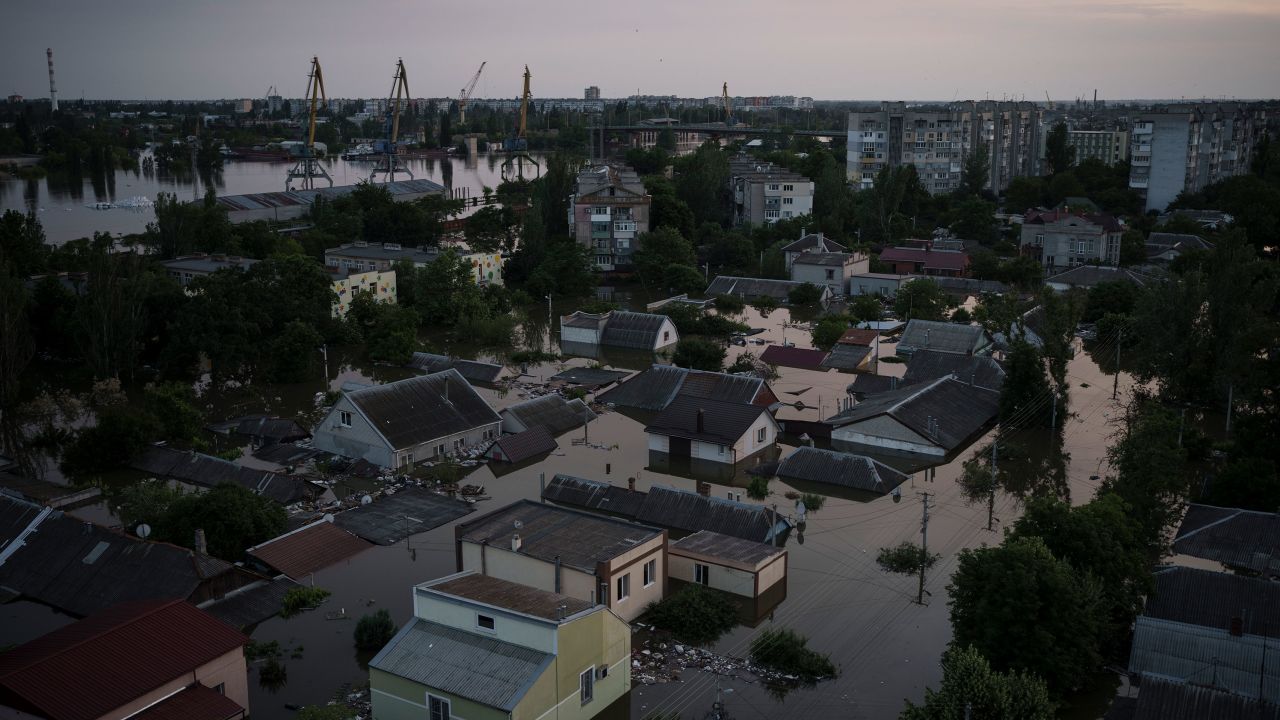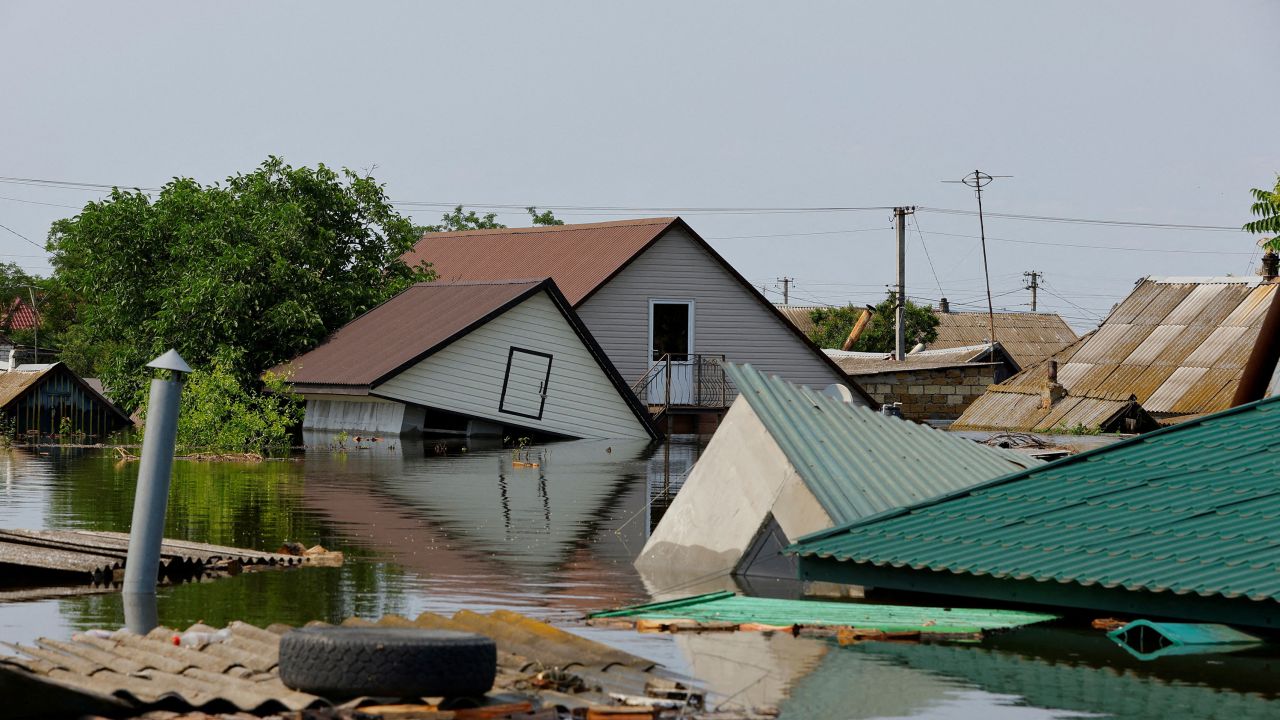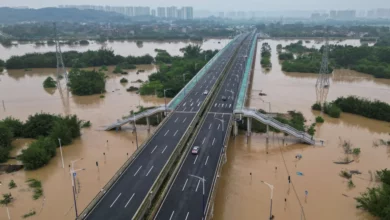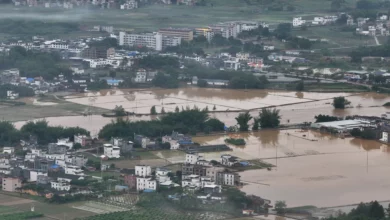
The toll from the collapse of the Russia-controlled Nova Kakhovka dam on June 6 has risen to 45, with both sides giving updates on those killed.
The collapse destroyed villages, flooded farmland and cut off power and clean water supplies to tens of thousands of people.
Floodwaters are receding, but debris washed down the Dnipro river – which flows into the Black Sea – turning Odesa’s coastline into “a garbage dump and animal cemetery,” according to Ukrainian authorities.
“The beaches of Odesa have been declared unsuitable for swimming due to a significant aggravation in the condition of water in open water areas (sea, estuary) and a genuine threat to the health of the city residents,” the Odesa municipality said in a Telegram post Sunday.
Odesa’s stretch of sandy beaches and holiday resorts were once popular with Ukrainian and foreign holidaymakers before Russia’s invasion.
The beaches have been largely abandoned by swimmers in recent months as mines continue to wash on the shoreline.
Authorities raised the alarm about the declining water quality in a Telegram post on Saturday, saying that lab tests had “identified infectious agents over the past week.”
Traces of salmonella, worm’s eggs and worm’s larvae were all found in the water which also “significantly” exceeded permitted levels of E. Coli.
“The presence of all of these biological pathogens in the water of open water areas in Odesa region, including the Black Sea, the Bilhorod-Dnistrovskyi Estuary, and the Danube River, constitutes a genuine threat to the life and health of the population,” the municipality added.
Authorities announced that Odesa residents were also prohibited from selling fish and seafood from “unidentified places of fishing” near markets and shopping centers.
Health authorities in the southern city of Mykolaiv on Sunday also warned residents not to drink faucet water, go swimming or fish after contaminants were found in the water there.
Cholera-like vibrio was detected in open waters of Mykolaiv, the regional center for Disease Control and Prevention posted on its official Facebook account Sunday, which could cause acute intestinal infections.
The disease control center also warned that ammonia levels in the Dnipro-Buh Estuary “exceeded the maximum permissible concentrations.”

UN censures Russia
On Sunday, the United Nations condemned Russia for blocking humanitarian aid access to occupied areas of southern Ukraine that were affected by the dam collapse earlier this month.
“The UN has been engaging with the governments of Ukraine and the Russian Federation regarding effective delivery of humanitarian aid to all people affected by the devastating destruction of the Kakhovka Dam,” Denise Brown, UN humanitarian coordinator for Ukraine, said in a statement.
“The government of the Russian Federation has so far declined our request to access the areas under its temporary military control.”
The UN urged the Russian authorities to act in accordance with their obligations under international humanitarian law.
“Aid cannot be denied to people who need it,” Brown said.
Last week, Ukrainian President Volodymyr Zelensky called for international support to help rescue victims of the dam collapse in Russian-occupied territory and accused Moscow of not providing “any real help to the people in the flooded areas.”
Russia-backed officials in occupied parts of Ukraine have said the government will provide “maximum” support to the areas affected, and that humanitarian aid was being distributed.
On Thursday, Andrey Alekseenko, the Russia-backed head of the Kherson regional government, said humanitarian aid and monetary compensation were being given out in affected areas.

It remains unclear if the Nova Kakhovka dam was deliberately targeted or whether structural failure was behind its collapse.
Kyiv says Russia blew up the dam “in panic” ahead of a planned Ukrainian counteroffensive, while Russia accuses Ukraine of launching “mass artillery attacks” on the structure to deprive Crimea of water and provide a distraction from the battlefield.
At least 16 people are dead and 31 are missing in flooding from the collapse, Ukraine’s Ministry of Internal Affairs said Saturday.
It added that 3,614 people had been evacuated from the flooded areas “including 474 children and 80 people with reduced mobility.”
In a Telegram post the same day, Moscow-backed Alekseenko said 29 people had died in Russian-controlled territory.
The area surrounding the dam has been one of the most heavily contested regions since Russia launched its full-scale invasion of Ukraine in February 2022.
The city of Kherson, which sits on the west bank of the Dnipro river, was liberated by the Ukrainian military in November after eight months of Russian occupation.
But much of the east bank of the river south of the dam remains under Russian control.
The reservoir supplies water to large swaths of southern Ukraine, including to the Crimean peninsula which Russia illegally annexed in 2014.




